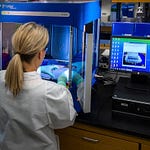
The Map Is Not the Territory
Artificial intelligence has often been described as a new frontier—a vast, uncharted space promising unparalleled opportunity but fraught with hidden risks. Recently, the inaugural convening of the International Network of AI Safety Institutes (INASI) in San Francisco laid down a global compass for navigating this terrain. With representatives from 10 countries, this gathering marked a pivotal step in building an international consensus on AI safety.
This article can be found under DOI https://doi.org/10.59350/tyqbn-tfs92
But creating a map of the future is not the same as charting the course. INASI’s mission isn’t just about identifying the risks; it’s about creating the tools, systems, and shared understanding needed to mitigate them while preserving the transformative potential of AI. As we examine this effort, it becomes clear that the network’s formation is as much about coordination as it is about trust.
Shared Understanding in a Fragmented World
AI’s power lies in its ability to scale decision-making and creativity. Yet that same power amplifies the risks. Generative AI can synthesize text, images, and data at extraordinary speeds, but it can also facilitate disinformation, fraud, and even large-scale social manipulation. The challenge isn’t simply to develop technical safeguards; it’s to create a global framework where those safeguards are consistent and interoperable.
This is where INASI steps in. Its purpose is to bring together the technical expertise of member nations to advance AI safety science and align on best practices. By creating a shared foundation, the network aims to avoid a patchwork of regional rules that could stifle innovation and exacerbate risks.
Among INASI’s key priorities:
Mitigating Risks from Synthetic Content: From non-consensual imagery to fraudulent impersonations, synthetic content poses complex challenges. INASI’s members are pooling resources to better understand and address these threats.
Testing Advanced AI Models: Ensuring models operate safely across cultural and linguistic contexts requires international cooperation. The network’s first testing exercise highlights the nuances of evaluating AI systems in a global landscape.
Advancing Inclusion: AI safety isn’t just a problem for wealthy nations. INASI’s mission includes empowering countries at all stages of development to participate in the conversation and access the benefits of safe AI.
But the story is not in the lists of priorities. It’s in the threads connecting them.
FABRIC in Action
AI safety doesn’t exist in isolation—it intertwines deeply with the broader FABRIC technologies. Imagine the role of quantum computing in securing generative AI systems, or the necessity of robotics in monitoring AI-driven manufacturing. Each innovation in safety ripples outward, touching fields as diverse as biotechnology and fusion energy.
Take, for example, INASI’s focus on synthetic content risks. This isn’t merely about addressing disinformation; it’s about preserving trust in digital ecosystems. AI-generated imagery and narratives have implications for the bioeconomy, where public confidence in technologies like biomanufacturing depends on the integrity of the information surrounding them. The stakes are high, and the solutions must be interdisciplinary.
Trust as Infrastructure
INASI’s work underscores a simple but profound truth: safety begins with trust. Building that trust requires transparency—not just in how AI systems are developed, but in how their risks are communicated and mitigated. For many nations, this is a question of survival as much as prosperity.
The network’s commitment to global inclusion is particularly striking. By prioritizing accessibility, INASI aims to ensure that all nations, regardless of their resources, can contribute to and benefit from AI safety. This isn’t charity; it’s strategy. An interconnected world can’t afford isolated vulnerabilities.
At the convening, representatives emphasized that trust isn’t static—it evolves. Just as AI systems are iteratively tested and improved, so too must our frameworks for governing them. The journey is as much about adaptation as it is about design.
A Collective Compass
The question for INASI—and for all of us—is not whether AI will reshape the world but how. Will it be a force for equity or division, for innovation or exploitation? The decisions made today will determine whether AI enhances human potential or undermines it.
INASI’s formation signals a collective commitment to steering this transformative technology toward the better angels of our nature. By pooling knowledge, aligning practices, and embracing shared responsibility, the network offers a blueprint for navigating the complexities ahead.
Reflections for the Future
As we consider INASI’s mission, it’s worth reflecting on the broader implications. Safety isn’t just a technical problem; it’s a human one. It’s about the systems we build, the values we encode, and the futures we imagine. This is the work of The Connected Ideas Project—exploring the intersections of technology, humanity, and purpose.
AI safety isn’t just about preventing harm. It’s about creating space for growth, discovery, and connection. It’s about ensuring that the map we draw reflects the richness of the territory it represents.
Let’s build that map thoughtfully. And let’s walk it together.
Cheers,
-Titus
The podcast audio was AI-generated using Google’s NotebookLM











Share this post